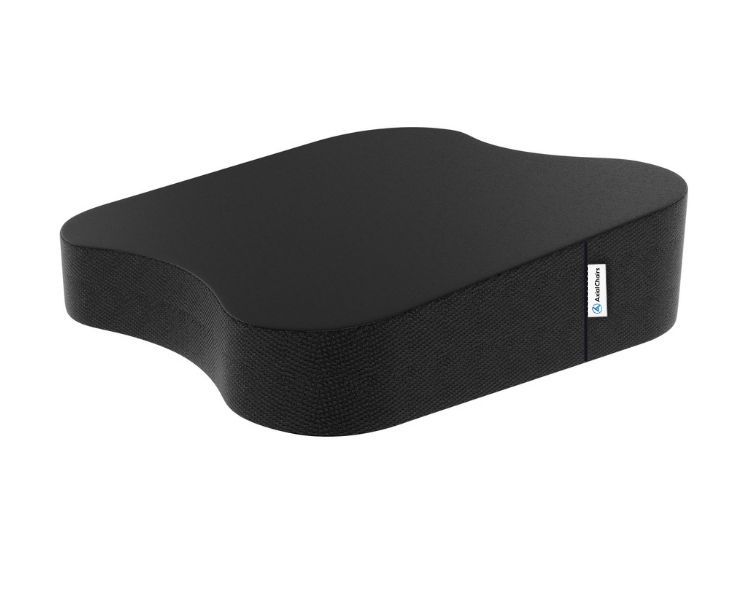Are you experiencing pain in your sacroiliac joint? If so, it can seem like the end of the world – no matter how much or little physical activity you do, that nagging ache just won’t go away. SI joint pain can be incredibly debilitating and significantly reduce quality of life. In this blog post, we will explore what causes SI Joint discomfort, the warning signs to look out for, and discuss potential treatments that may help alleviate symptoms.
As a physician I am dedicated to providing facts-based information about common concerns related to health issues experienced by individuals across age groups and genders. With compassion for those who are struggling with chronic Sacroiliac Joint Pain (SIJ), my aim is to provide both supportive advice on ways to manage pain as well as possible medical interventions that could have long lasting effects!
If you suffer from sacroiliac pain, I can offer guidance on this subject. With over 30 years of experience as a chiropractor and ergonomist, I’ve authored a book on posture, spoken on national TV, and engineered creative solutions for comfortable sitting. My latest project, a range of ergonomic seat cushions, was successfully funded through Kickstarter. Allow me to share my expertise and recommend some great options to alleviate your back pain.
Sacroiliac Pain: The Basics that You Need to Know for Life
First things first, let’s talk about the SI joint. The sacroiliac joint, or SI joint, is the connection between the sacrum (the triangular bone at the base of your spine) and the ilium (the large, flat part of your pelvis). This joint is crucial for supporting your upper body and transferring the load from your spine to your legs. When it’s not working correctly or when it’s misaligned, pain can be unbearable.
I’ve found that the key to reducing SI joint pain is to maintain proper spinal alignment and develop a balanced, strong core. When your spine is aligned, your SI joint can function properly, reducing stress and pain in the joint. A strong core also helps to support your spine and maintain its alignment. Here are a few tips to help you achieve this:
- Focus on posture: Poor posture can contribute to SI joint pain by putting unnecessary strain on your spine and joints. Try to maintain a neutral spine position when sitting, standing, or walking. This means keeping your head up, shoulders back, and pelvis aligned.
- Strengthen your core: Engage in exercises that target your abdominal, lower back, and hip muscles. This can help to support your spine and SI joint. Some great exercises include planks, bridges, and bird dogs. Remember, always consult your healthcare provider before starting any exercise program.
- Get adjusted: Regular chiropractic adjustments can help maintain proper spinal alignment and keep your SI joint functioning correctly. Consult your chiropractor to create a personalized treatment plan tailored to your specific needs.
- Get your sitting posture right!: To efficiently address your seating needs, it’s vital to focus on multiple factors, with chair adjustment being a key element. Various approaches can be employed to accomplish this, such as integrating a well-designed seat cushion and back support. These enhancements can reduce strain on your back and legs, heightening comfort and alignment during prolonged periods of sitting. Furthermore, make sure your feet are steadily on the floor and that there’s adequate clearance between your chair and workstation. By implementing these guidelines, any ordinary rigid chair can be transformed into an ergonomic sanctuary that promotes long-term health and wellness.
Ergonomic Seating Solution
A strategically designed ergonomic seat wedge (above) can be utilized to correctly align your spine and foster better stability. This high-quality natural latex cushion assists in building core strength while alleviating pressure in other regions, such as the neck and shoulders. Additionally, maintaining an upright position is easier on your hips and knees, as it activates more muscles concurrently compared to reclining on a plush surface. This vertical posture helps avoid strain-inducing habits that people may inadvertently adopt while working.
Now, let’s talk about sitting without causing pain in your knees. From my experience, one of the best ways to do this is by using an expert-designed ergonomic seat cushion made with a natural latex top and a high-density base layer foam. I always recommend this combination for my patients because it provides excellent support, pressure relief, and durability.
BTW, I never recommend memory foam, as I believe that it lacks pressure support and resilience. Not to mention, memory foam is a toxic material that can get hot when you sit on it for long periods, leading to discomfort and potential health risks.
Best Seat Cushion for SI Joint SupportAxial Ergonomic Seat Cushion® | Seat Chair Wedge
Quick Guide: A 30-Second Summary

All Day Comfort & Support
Product Name
Axial Designs™ Seat Cushion
Price
$149
Warranty
1 Year
Type
Posture Wedge
Top Layer
100% Natural Latex (Molded)
Bottom Layer
High-Density Foam
Top Material
Isometric Grippy Vegan Leather
Bottom Material
Non-Slip Material
Side Material
3D Breathable Fabric
Understanding SI Joint Chronic Pain: Causes and Symptoms
As a chiropractor, I know how frustrating it can be to deal with SI joint pain. You may feel a sharp pain in your lower back or buttocks, or even down your leg. But don’t worry, I’m here to help. From my clinical experience, I’ve found that the sacroiliac joint, which connects the spine to the pelvis, can become misaligned or inflamed, leading to discomfort.
Living with SI Joint Dysfunction: Managing Your Pain with Yoga Practice
I know how you feel – living with SI joint dysfunction can be a real challenge, and as a chiropractor, I understand the desire to find a solution that not only eases your pain but also empowers you to take control of your own health. Here’s what I found out from my clinical experience: yoga practice can be an invaluable tool to help manage your SI joint pain. By focusing on spinal alignment and developing a balanced and strong core, yoga can be the central mechanism for sitting without causing pain in the knees.
When you engage in a consistent yoga practice, your body gradually becomes more aligned, your muscles more balanced, and your core stronger. This newfound strength and stability will not only help reduce the stress placed on your SI joint but also promote a more comfortable and pain-free seated position. So, grab your mat and let’s explore the world of yoga together, because I truly believe it can make a world of difference for those struggling with SI joint dysfunction.
Exploring Treatment Options for SI Joint Pain: Physical Therapy, Chiropractic Care, and More
When it comes to treating SI joint pain, there are a variety of options available. From my experience as a chiropractor, I’ve found that spinal adjustments can be incredibly effective in restoring proper alignment and reducing inflammation. However, physical therapy and exercises can also be beneficial in strengthening your core muscles and improving your posture. I’ll work with you to create a customized treatment plan that addresses your specific needs and goals.
Yoga for SI Joint Pain: Postures to Alleviate Discomfort
Yoga can be a great way to alleviate SI joint pain and prevent future flare-ups. From my experience, certain poses can help stretch and strengthen the muscles around the SI joint, promoting proper alignment and reducing inflammation. I can recommend specific postures that target your core and lower back muscles, as well as modifications to ensure that you’re practicing safely.
NLP Techniques for Coping with Chronic SI Joint Pain
Living with chronic SI joint pain can be incredibly challenging, both physically and emotionally. That’s why I’m here to support you not just as a chiropractor, but as a human being. In addition to spinal adjustments and exercise, I can also teach you NLP techniques to manage your pain and improve your mental wellbeing. From my clinical experience, these techniques can be incredibly effective in reducing stress and anxiety, which can exacerbate pain.
Christy’s Story: Overcoming SI Joint Pain with a Holistic Approach
Let me tell you about Christy, one of my patients who struggled with chronic SI joint pain for years. Together, we developed a holistic approach to her treatment, including spinal adjustments, exercise, and NLP techniques. By addressing both the physical and emotional components of her pain, Christy was able to make significant progress and improve her quality of life. I’m proud to have been a part of her journey and I’m here to support you on yours.
All Day Comfort & Support
Final Thoughts
SI joint pain can be a complex and difficult thing to manage, but it doesn’t have to ruin your life. It might be a challenge, especially if you’re trying to manage the pain on your own, but there are excellent resources available to help people cope with their condition. Seeking assistance from health care professionals is always recommended and early identification of the problem can prevent it from worsening over time.
Taking note of when the pain flares up or easing certain activities can reduce discomfort and improve quality of life. I hope that others facing similar obstacles find this post and learn some methods to radiate their pain with grace. Managing SI joint pain may feel daunting, but with the proper care you can lead a full life despite your difficulties. Don’t be afraid seek help – no matter what your age – because you deserve to live in peace and happiness.






